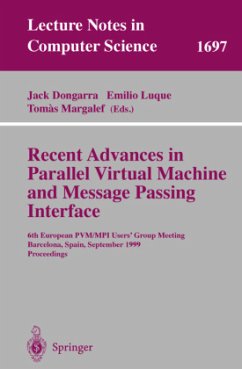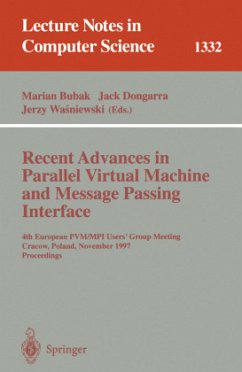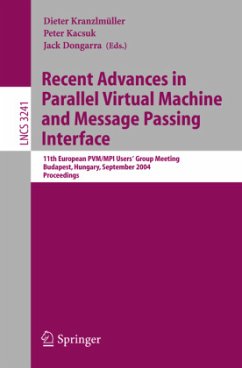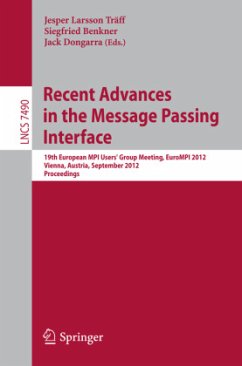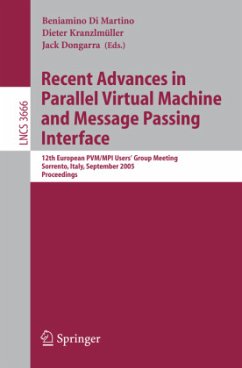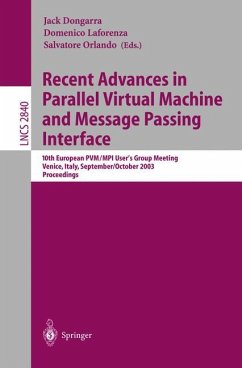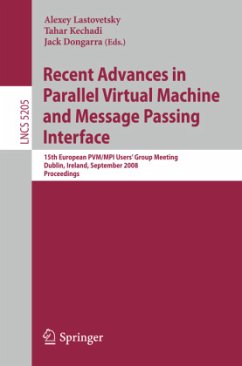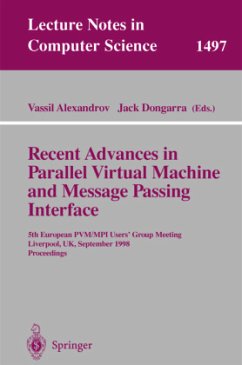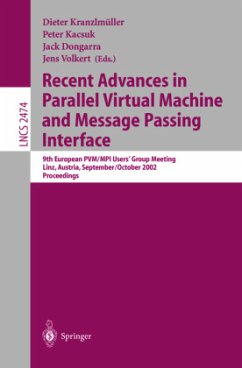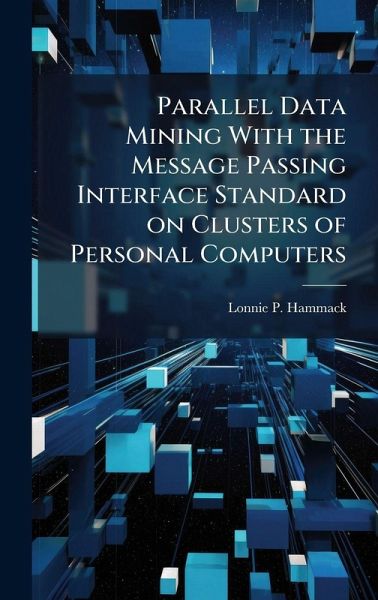
Parallel Data Mining With the Message Passing Interface Standard on Clusters of Personal Computers
Versandkostenfrei!
Versandfertig in über 4 Wochen
29,99 €
inkl. MwSt.
Weitere Ausgaben:

PAYBACK Punkte
15 °P sammeln!
Piles of personal computers (PoPCs) have begun to challenge the performance of the traditional Massively Parallel Processors (MPPs) and the less traditional networks of workstations (NOWs) as platforms for parallel computing. Large clusters of PCs have reached and at times exceeded the performance of modern MPPs at a fraction of the cost. Built with commodity components, these clusters can be constructed for about half the cost of a comparable NOW. The primary competing operating systems (O/S) in use on PoPCs are Linux and Windows NT. This thesis investigation compares the performance of an NT...
Piles of personal computers (PoPCs) have begun to challenge the performance of the traditional Massively Parallel Processors (MPPs) and the less traditional networks of workstations (NOWs) as platforms for parallel computing. Large clusters of PCs have reached and at times exceeded the performance of modern MPPs at a fraction of the cost. Built with commodity components, these clusters can be constructed for about half the cost of a comparable NOW. The primary competing operating systems (O/S) in use on PoPCs are Linux and Windows NT. This thesis investigation compares the performance of an NT cluster with that of a Linux cluster, a NOW, and an MPP. A comparison of the MPI tools available for NT is also accomplished. These comparisons are made using the Pallas benchmark suite for MPI and a parallel data mining algorithm. This data mining technique, known as the Genetic Rule and Classifier Construction Environment (GRaCCE), uses a genetic algorithm to mine decision rules from data. This work has been selected by scholars as being culturally important, and is part of the knowledge base of civilization as we know it. This work was reproduced from the original artifact, and remains as true to the original work as possible. Therefore, you will see the original copyright references, library stamps (as most of these works have been housed in our most important libraries around the world), and other notations in the work. This work is in the public domain in the United States of America, and possibly other nations. Within the United States, you may freely copy and distribute this work, as no entity (individual or corporate) has a copyright on the body of the work. As a reproduction of a historical artifact, this work may contain missing or blurred pages, poor pictures, errant marks, etc. Scholars believe, and we concur, that this work is important enough to be preserved, reproduced, and made generally available to the public. We appreciate your support of the preservation process, and thank you for being an important part of keeping this knowledge alive and relevant.



